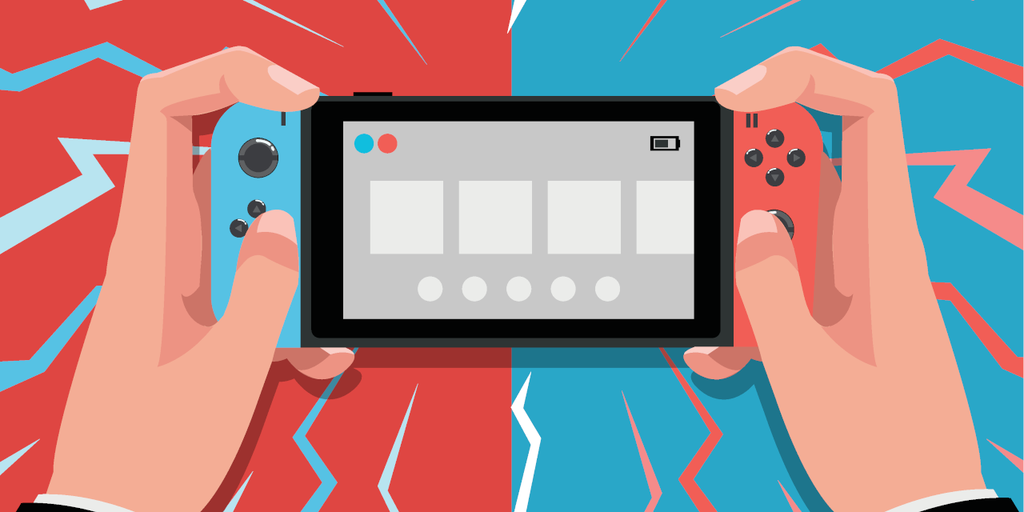When the Nintendo Switch launched eight years ago, it marked a sea change for the games industry. Suddenly, pocket-sized games could come with you wherever you go, along with a console-like interface to play them.
Since then, we’ve seen the release of the Steam Deck, the Asus ROG Ally, the Lenovo Legion Go, and many other handheld systems looking to bring that experience to PC gaming.
The Nintendo Switch debuted in early 2017, and even then, the hardware was pretty outdated. The Nvidia Tegra X1 chip that runs the console debuted in 2015, and Nintendo decided long ago to stop fighting its console rivals on pure firepower. That was fine for a while, but after all these years, the Switch is showing its age.
Now, its successor appears imminent, and we’re expecting the Switch 2—what we’re calling it pending an official announcement—to be a generally more robust system.
But what can we expect from it when it is released? Here’s what we expect based on the latest details reported on by reputable publications and reliable leakers. Keep in mind, however, that they’re not confirmations of definitive hardware specs. Nintendo is notoriously secretive about its hardware and has yet to confirm much about the console officially.
Controller upgrades
The Joy-Con controllers have been one of the most divisive parts of the Nintendo Switch since its release. They’re thin and light, with much smaller analog sticks than other controllers.
Analog stick drift has been a consistent issue with Joy-Con controllers for years. The attachment system is pretty solid, but the rails can bend if the system is abused.
Nintendo is rumored to be addressing at least some of the issues involved.
Magnetic attachment
The Switch successor will reportedly use a magnetic attachment system for the new controllers.
According to Polygon, this could be done with strong electropermanent magnets that can be turned on or off with electrical current. A button on the back of the system would likely release the controllers from the handheld.
Hall Effect sticks
Current first-party gaming controllers use potentiometers to determine position, and the analog sticks have to contact that material to sense that position directly. Over time, the connection between the stick and the potentiometer can be interrupted by dust and debris, or by corrosion of the metals involved in the contact.
The new Switch controllers will reportedly use Hall Effect technology, which senses position using magnets and involves no contact between the stick and the sensor, allowing for reading without wear and tear.
They’re more expensive to manufacture, but avoiding a class action lawsuit over stick drift might be cheaper.
What’s that sensor?
Leaked pictures of the Switch 2 controller show some kind of sensor between the SL and SR buttons—the buttons that act as shoulder buttons when holding a Joy-Con as a standalone mini-controller.
The sensor resembles the ones found on the underside of optical mice, suggesting it might enable the controller to function as a mouse.
Alternatively, it could serve to establish a proper connection with the Switch 2 console or fulfill another purpose. However, the possibility of a Switch-compatible mouse sparks hope for a new Mario Paint game—a nostalgic throwback to the Super Nintendo era—or additional control options for online shooters, strategy games, and beyond.
Bigger screen, higher resolution
Reports suggest that we’ll also be getting a bigger screen. The screen will reportedly be LCD instead of OLED—certainly a disappointment to Switch OLED owners and Switch fans hoping to upgrade to an OLED screen along with the Switch 2.
However, those reports also suggest that the screen will be a spacious 8 inches compared to the original 6.2-inch Switch screen. The Switch OLED display is 7 inches. This screen will reportedly sport a 1080p resolution compared to the 720p of the current model.
Speaking to TechRadar, the CEO of Dbrand—a company that makes skins and accessories for a variety of electronics—Adam Ijaz claims “the console will measure 270mm wide, 116mm tall, and 14mm thick, compared to the Switch’s measurements of 242mm x 102mm x 13.9mm.” In other words: a little taller and wider, but not dramatically so.
Reports also suggest that when docked, the Switch 2 will offer considerably more power and potentially even be capable of 4K graphics; we’re skeptical about that last one, but crossing our fingers all the same.
Backwards compatibility
Nintendo itself has confirmed that the Nintendo Switch 2 will be backwards compatible with original Switch games.
“Switch software will also be playable on the successor to Nintendo Switch,” the company said in an X post attributed to Nintendo President Shuntaro Furukawa last November. “Nintendo Switch Online will be available on the successor to Nintendo Switch as well.”
That suggests the system will have a cartridge slot that accepts Switch cartridges, and that digital games will likewise carry over.
Nintendo has struggled with backward compatibility in the past, partly because the company has changed storage formats and sizes on nearly every console every released. Enthusiasm for playing older games is considerably higher now than ever before, though, and Nintendo may be feeling that pressure.
Beefed-up specs
The exact specs are the thing we know the least about, in part because you can’t glean hardware specs by taking a surreptitious photo of the system.
Digital Foundry believes that the Nintendo Switch 2 will use Nvidia’s T239 processor. This would also potentially open the Nintendo Switch 2 to a feature that has given PC gaming a leg up in displaying advanced graphics on mid-range or slightly older systems: DLSS.
DLSS allows a GPU to output a game at low resolution, and then re-sample the image and display a convincing result at much higher resolution.
This technology has become increasingly common in games in the last few years, and having it available on the Nintendo Switch 2 could mean significantly better visuals in games without having to rely on pure horsepower.
Reports put the overall system power around that of a PlayStation 4 or Xbox One. That seems a little low, but DLSS would make that somewhat of a moot point, even if that is the case.
Better battery life
According to the Broken Silicon podcast via TechRadar, the Nintendo Switch 2 will purportedly be clocked much higher than we expect when docked, but will be clocked “crazy low” when undocked.
That will hamper the system’s visual capabilities when gaming on the go, but a lower clock speed could improve battery life significantly—this is one of the most-wanted features by Switch owners.
This is all rumor, leaks, and speculation right now, so take it with a grain of salt big enough to make a lamp out of.
Nintendo reportedly plans to combat system scalping by making enough consoles to satisfy consumer demand. The company has yet to confirm the console’s name officially, and it hasn’t whispered even a word about the price or release date, so we’re just as eager to hear about those items as you are.
But a recent surge in leaks—enough to where Nintendo was spurred to comment on the flurry—suggests that a reveal could be right around the corner. Stay tuned.
Edited by Sebastian Sinclair
GG Newsletter
Get the latest web3 gaming news, hear directly from gaming studios and influencers covering the space, and receive power-ups from our partners.
Source: https://decrypt.co/300319/5-biggest-upgrades-nintendo-switch-2



